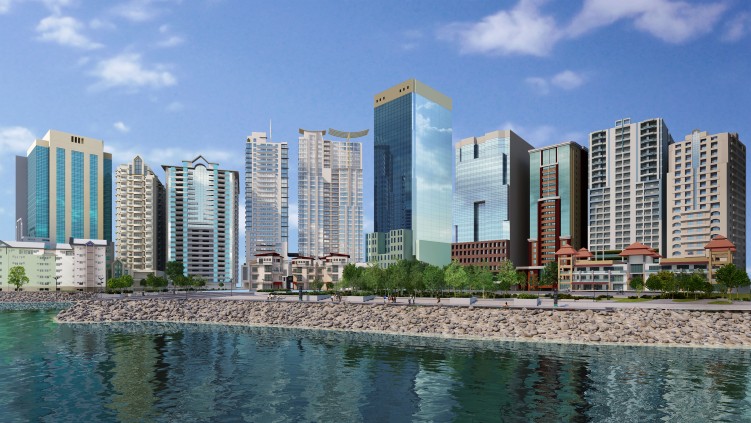3D visualization methods are remarkably adopted all over the globe. From blockbuster action movies to commercials for new buildings or commodities, 3D rendering can be put into action in real estate, ecommerce, gaming, film, and many other sectors.
Because of its efficacy to eliminate unnecessary costs, simplify early-stage error identification, and offer a dynamic preview of the final product, 3D model rendering services are becoming increasingly important in today\’s commercial landscape.
For this reason, the process of rendering a 3D model provides a quicker and more cost-effective alternative to establishing a tangible prototype of objects in the real world.
Basic Concepts of Virtual Reality Rendering
3D Rendering: A Closer Look
The process of transforming 3D models into 2D visuals that closely resemble real-life events is known as 3D rendering. It is a key method in the computer graphics, animation, and visualization industry. Moreover, 3D rendering techniques play an important part in bringing virtual objects and surroundings to life.
3D Rendering Techniques
The realm of 3D rendering offers several techniques for improving the realism and aesthetic look of digital images. Here are the top five commonly recognized and used 3D rendering strategies:
- Ray Tracing
Ray tracing is a complex technology that replicates light\’s interaction with objects. Ultimately, this approach determines how light rays interact with surfaces, resulting in realistic reflections, refractions, shadows, and lighting effects.
- Global Illumination
Global illumination is a set of techniques that simulate how light bounces and interacts with objects to produce realistic lighting effects such as soft shadows, color bleeding, and ambient occlusion.
- Ambient Occlusion
Ambient occlusion is a shading method that replicates ambient light occlusion in places when objects are close together. This technique can be used as a post-processing effect or as a direct component of rendering processes.
- Particle Systems
Particle systems recreate dynamic and fluid-like effects such as smoke, fire, water, and explosions. Artists can generate accurate representations of natural occurrences and dynamic situations using particle interaction phenomenon.
Making the Most Out of 3D Rendering Services
Real-Life Applications of Photorealistic Rendering Services
Real-time rendering systems have transformed businesses by providing an effective means of visualizing and communicating complex ideas, designs, and concepts. The following are some examples of real-world uses for 3D rendering services:
- Architectural Visualization
Architects and designers use 3D rendering to create lifelike representations of buildings, interiors, and landscapes. These renderings help clients to visualize and understand architectural concepts before construction begins.
3D rendering is used by architects and designers to produce precise representations of buildings, interiors, and landscapes. These graphics help clients to visualize and comprehend architectural concepts before the construction process starts.
- Product Designing
Designers can create realistic digital prototypes using animated rendering instead of physical prototypes. As a result, before investing in manufacturing, companies can look at items, evaluate their functioning, and identify any possible flaws.
- Film and Entertainment
Visual effects and animation are primarily reliant on 3D rendering in the film and entertainment sectors. This technique is utilized to replicate lifelike characters and action scenes in both animated films and visual effects.
- Video Games
Modern video game visuals rely on 3D visualization methods. The digital rendering technology allows for the construction of visually appealing virtual environments, characters, and effects.
- Advertising and Marketing
3D rendering services are used in advertising efforts to produce visually appealing images of products and services. High-quality renderings can showcase features, advantages, and aesthetics in an engaging and photo realistic manner.
- Medical Visualization
3D rendering is utilized in the medical industry to depict complicated anatomical features, medical procedures, and research data. Using 3D rendering technology, specialists can plan treatment procedures using precise 3D representations of the human body.
Exploring 3D Rendering Software
Choosing the best 3D rendering software is critical for creating appealing visual content. As a result, the three leading 3D rendering software alternatives extensively utilized by professionals are as follows:
- Autodesk 3ds Max
Autodesk 3ds Max is a powerful 3D modeling and rendering program that is popular among artists, designers, and visual effects specialists. The software offers a wide range of product modeling, animation, and 3D rendering tools. The program is very popular among the architectural, gaming, and film production sectors.
- Blender
Blender is a free and open-source 3D program that is rapidly gaining attraction due to its diversity and strong capabilities. It covers every part of the 3D production, from modeling to sculpting to animation and rendering. The system can render on both CPU and GPU, making it appropriate for a wide range of tasks, from architectural visualization to animated shorts.
- Chaos Group V-Ray
V-Ray is a popular rendering engine known for its remarkable realism and configurable settings, which enable artists to create stunning images adapted to their individual needs. Because of its capability to mimic complicated lighting settings and materials, V-Ray is widely utilized in architectural visualization, product design, and film production.
Final Words
3D rendering is a flexible and important technology that has transformed several industries. Its numerous approaches, which are supported by strong software, allow for the development of outstanding visual content that captivates viewers and helps professionals in performing their duties.
The future of 3D rendering holds exciting possibilities as technology advances, pushing the frontiers of realism and creativity to greater heights.

